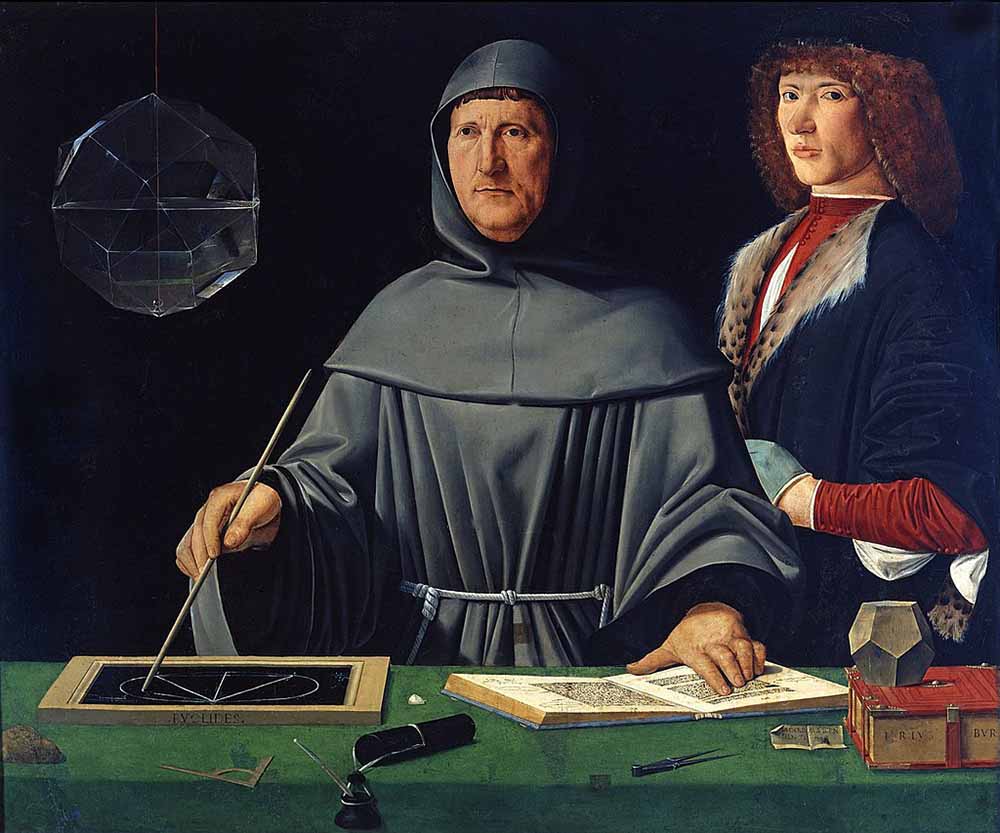[dropcap letter=”T”]
he development of modern accountancy goes hand in hand with the sophistication of trading and finance. There is evidence of accounting entries already in the Sumerian civilization, three millennia before Christ, where on tablets of clay—the most distant relative of the iPad—notes of debit and credit balances were kept. It is necessary to take a leap forward to the end of the 15th century to once again find truly disruptive changes in the field of accountancy, when the bulk of the mathematics developed by Arabs and Indians was applied to the trading activity that would take off with the European Renaissance.
Towards the end of the 15th century, Barcelona had become one of the great trading and financial centres of the Mediterranean, along with Genoa, Valencia, Naples and Venice. It was in Barcelona when, under the patronage of publisher Pere Posa, the book by Francesc Santcliment, Suma de la art de arismètica—Sum of the Art of Arismetic, appeared in 1482. This incunabulum added certain improvements and contributions to the more extensive Arte dell’abbaco (Treviso, 1478), which was very popular at the time and which compiled all the practical mathematics known to date. Those treatises, along with others written concurrently in other trading cities, always kept a section with specific annotations for the growing merchant class.

A little later, in 1494, Luca Pacioli (1445-1517)—for whom Leonardo da Vinci felt great admiration—would lay the foundations of what we know today as double entry bookkeeping, i.e. that thing about Credit vs. Debit they discuss at modern business schools—though there always seems to be more debit than credit! Born in a small village in Tuscany, Pacioli lived between Venice, Florence and Rome, in one of the most flourishing periods of humanity. As a young man, he was at the service of a rich Venetian merchant, Antonio Rompiasi, thanks to whom we must infer that the restless Pacioli would develop his interest in the affairs of commerce. It is also in Venice where he was instructed in geometry and algebra by Maestro Bragadino. Although Pacioli is considered the father of modern accounting, these double-entry techniques, or alla veneziana, had been developing among the merchants of the Western Mediterranean for two centuries or so.
Before the development of double entry bookkeeping, the way a business’ accounts were kept was rather simple, in keeping with the simplicity of the operations of the time. There were generally no credit transactions, and if there were any, they were simple bilateral agreements, so there were no major differences between accrual based and cash based accounting. Because most people couldn’t read and write in the Middle Ages, the feudal states performed account control orally. The person in charge of a part of the estate dictated the expenses that had been incurred during the period and summarized the state of affairs aloud before a series of witnesses called the auditores, literally “those who listen” and who would give their approval of the report, or perhaps not. Hence the origin of the word auditor that still designates the profession.
The incorporation of credit, exchange rates, or the need to have a more accurate record of the inventory, generated the need to develop more accurate bookkeeping. Products began to be traded simultaneously in different ports: merchandise bought in Majorca might be manufactured in Barcelona and then divided and transported to several ports before its final sale. The value chain became international and years might pass between the purchase and the sale of a product.
However, it would be Pacioli’s Summa de Arithmetica, Geometrica, Porpotioni et Proportionalita that would lay the foundations of modern accounting. It was of great commercial success (it would benefit from the invention of the printing press some years earlier) in which the Venetian Renaissance author would detail everything he knew about mathematics. The text included 27 pages where the double-entry system was described for the first time in detail and with multiple examples. It was a safer, more accurate system because all the transactions were recorded twice in a system made up of different books: one for day-to-day monitoring (which would permit control of inventory), and another to carry the sums of the overall positions that, mutatus mutandi, has reached the present day. As everything was recorded twice, if we sold a bale of wool for a ducat, we would have to record both the sale and the ducat. Each entry was rebalanced with its counterpart, keeping the balance of assets equal to liabilities in perfect symmetry.
The adoption of these techniques would not be immediate. It was an innovation that required considerable effort and that would only be compensated when the sophistication of the operations required it. It would thus not be until Europe began its Industrial Revolution when the language created centuries earlier by Pacioli would definitively be consolidated as the usual commercial practice, allowing the new industrial bourgeoisie to direct their operations throughout the new empires and to control their estates.
However, the main aim of the improvements in bookkeeping was not to have a management tool or to allow the control of complex operations. It was primarily a tool that would protect the interests of creditors and shareholders of a business first, and of limited companies later—the first modern limited companies would be incorporated in England in 1600. Projecting a faithful, up-to-minute picture of all the assets of a company was the only way to guarantee that the investors in a business would receive a fair, proportional part of the profits. Obviously, accounting, and still further, a proper audit, could not end frauds and scams, but its novel nature and precision allowed a common language to be established that would foster trust between the parties, and by extension broaden the horizons of trade and prosperity.
Looking at the origins of bookkeeping allows us to gain a perspective view on how trading habits and customs would determine good practice in accounting over the centuries, as well as those in banking and commerce. Through a continuous process of trial and error, bottom-up, the accounting principles were refined in a gradual process of decanting. By contrast, at the end of the twentieth century and the beginning of the twenty-first century, we have witnessed multiple political changes in the traditional principles of law. A spurious modification, imposed top-down, often to satisfy powerful lobbies (such as the leveraged banks on Wall Street), which has favoured a more short-term, volatile accounting system has too often forgotten its main function. This is none other than protecting and generating trust for creditors and shareholders, which is the same as saying confidence for the economy as a whole. Something to mull over.




















